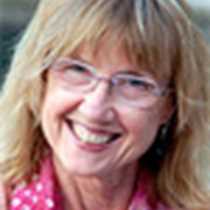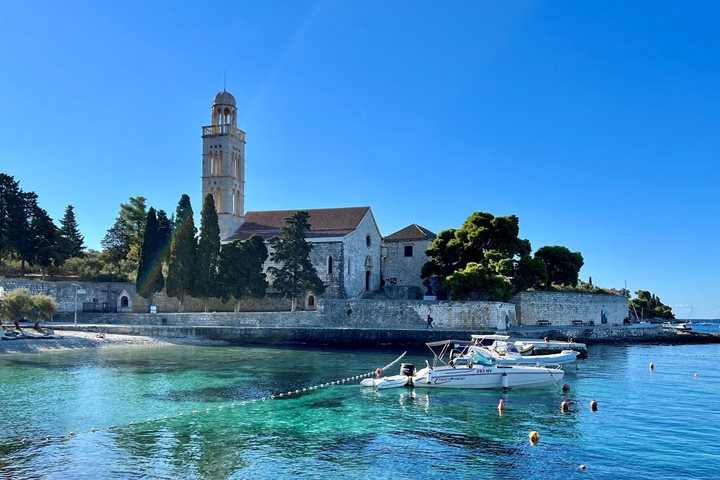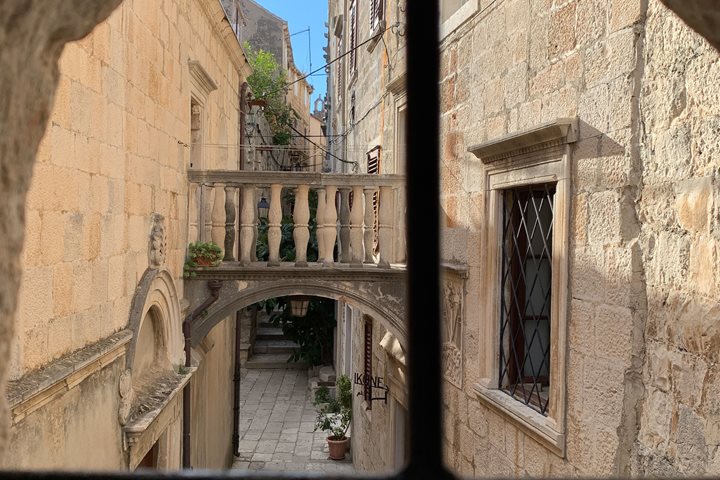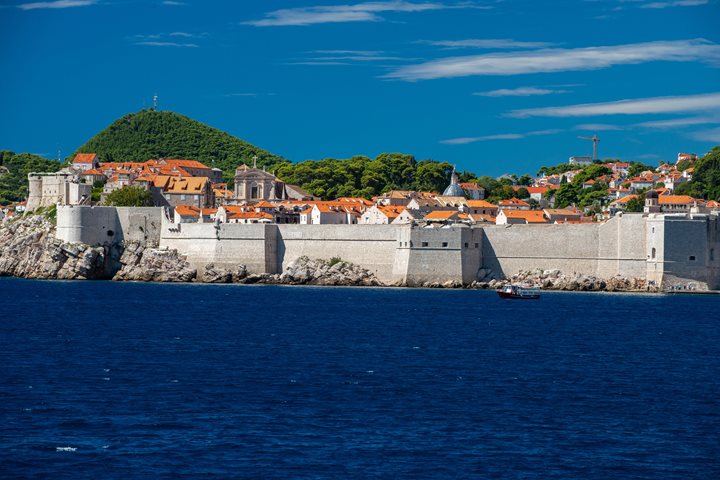It was a lazy morning aboard Sea Cloud waiting for the wind to catch our sails. Tom gave a “play by play” explanation of sailing maneuvers on the Lido Deck, but the wind just wasn’t cooperating with him. In addition to the usual goodies at the sumptuous breakfast buffet, there was the waffle station: hot steaming waffles to order. Later that morning, Nikolina, our onboard Croatian guide, gave an overview of Croatia, its different regions and touristic sights as well as gastronomic treats. It is a diverse country that has many attractions of which the Dalmatian Coast is just one (although in my view the most attractive, but I’m prejudiced).Then the wind finally picked up and we set sail (albeit slowly) for Korcula.
The lunch buffet was a standout: fresh grilled sea bream, filleted before our eyes and garnished with sea salt and olive was clearly the star of the day accompanied by local Croatian wines and finished off (in addition to the usual fresh fruit and selection of international cheese) with a hot apple crumble with warm caramel sauce. Luckily espresso and cappuccino were available to stave off the urge to nap (for those who wanted to resist).
We anchored off the medieval town of Korcula, just outside the city walls. Originally named Black Corfu (Kekyra Malaina) by the Greek settlers (after whom the Grk grape is named as well), this little jewel of a medieval city is very compact and laid out like a fish. This design deflects the force of the winds which can sometimes reach speeds of 65 miles an hour in the winter. We entered using the staircase built by the Austro-Hungarians for Emperor Franz Joseph’s visit (the Austro-Hungarian Empire took over the Dalmatian Coast in the 19th century), but until Napoleon this was Venetian territory as was evident from the Lion of St. Mark everywhere.
Unlike the island of Hvar where we were yesterday, the inhabitants of Korcula typically return to the island after studying at the university on the mainland (either in Dubrovnik, Split, Zadar, or the capital Zagreb). There is a very strong sense of tradition and pride of place that is palpable throughout the town. The three traditional brotherhoods (guild-like organizations of sailors and shipbuilders, stonemasons, and merchants) are still active. There is still a lively competition between the brotherhoods, for example, to determine which group will have the most members represented in the Easter procession. This procession is a yearly event during which immense candles weighing upwards of 50-60 pounds are carried by a single man wearing a special harness throughout the town. Each brotherhood has its own robes and candles on display in the Ikon Museum where there is also a small collection Orthodox icons brought to Korcula, a Catholic town, as a votive offering following a 16th century maritime battle with the Ottomans. We also visited the Bishop’s Museum which has a richly textured collection of artifacts, both religious and secular, including a very elaborately embroidered vestment that is depicted in the Tintorello portrait of St. Mark in his cathedral next door. We ended the tour at the Cukarin, a bakery specializing in traditional Korcula sweets.
Another tradition is the Moreška Sword Dance, a symbolic battle between good and evil, black and white (well, red, actually) which has been handed down from father to son. The young black king kidnaps the lovely bula, bride, and the red king demands her back. There follows a series of ever more complicated dance moves and sword action, but finally the red king prevails and the bula is reunited with her beloved.







